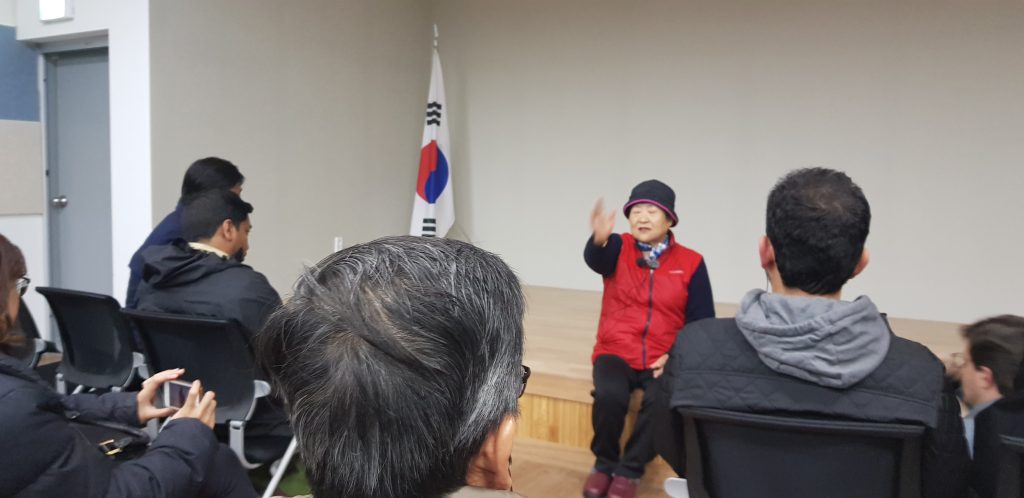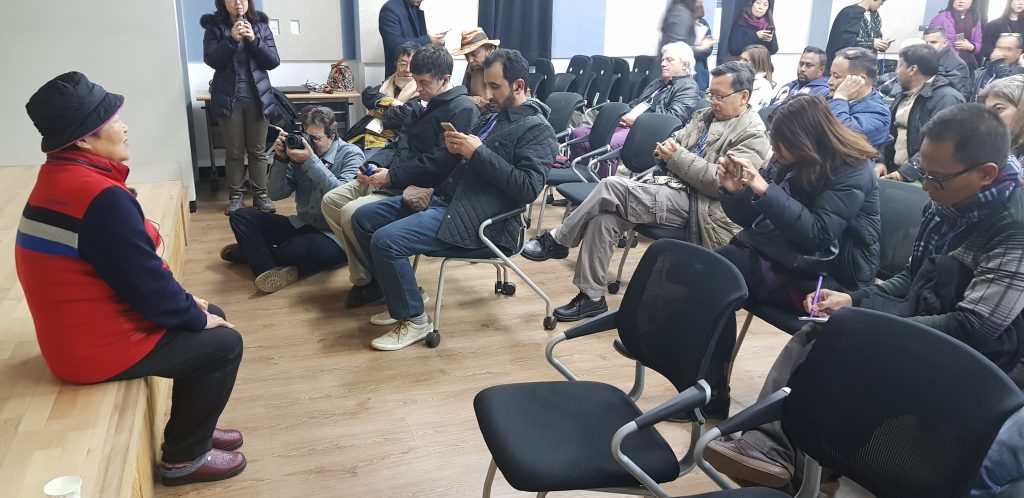South Korea’s Ex Killing Fields Residents Need Reunification Talk in Jeju
Story and photos by Chhay Sophal
Cambodia News

Jeju Island, South Korea (March 26, 2018): Eyewitnessed for massacre in more than haft century ago, a woman seeks the divided Korea to become one strong nation in the world and the trigger of reunification needs to be done on the former massacre island, Jeju.
In 80 years of age, Go Wan-soon is now the chairperson of senior villagers association in Jeju’s Buk Chon village, southern part of South Korea. 70 years ago, Wan-soon was 9 years old seeing by her own eyes that many people, including children and pregnant ladies, were shot dead and tortured on the streets and in the fields while her home and school were getting burned down by the US-backed government armed forces.
Based on the Korean history, after Korea was liberated from Japan’s colony in 1945 by the alliance troops, Jeju Islanders did not agree with the division of Korea and they protested against the move when South Korea was occupied by American troops and the North was under control of the Communist Soviet Union [Russia].
Due to opposing the Korean division in 1947 and boycotting election to establish the South Korean authority in 1948, Many Jeju islanders were accused of leftists who were pro communist ideology fell into a tragic island with massacre. Then, from March 1947 to September 1954, about 300.000 people of 30% of Jeju population lost their lives — Jeju Islanders call the period of Massacre or the killing fields.
Reunification of the only one divided country has been hurled around the world and after the 2018 Pyeong Chang Winter Olympics and Paralympics, the movement for peace and reconciliation in the Korean peninsular is at dawn.
Another good sign is the planned meeting between South Korean President Moon Jae-in and North Korean Leader Kim Jong-un in April at the border divided the two Koreas before Jong-un plans to meet US President Donald Trump in May.
“North Korea has [natural] resources while South Korea has human resources and higher education. So when we reunify we can have lots of benefits and much development. We can educate the north and the south can export goods….It is good that the negotiation of reunification can be made here as Kim Jong-un relative was also from Jeju,” Wan-soon said through an interpreter.
Heo Ho-Joon, a senior journalist of the Hang Kyo-reh daily newspaper in Jeju, told a group of 70 journalists from 50 countries on Friday that Jeju Islanders really want reunification and if negotiation on the reunification is made in Jeju is much better.
Echoing both Wan-soon and Ho-Jean, Gayoon Baek — co-representative of Jeju Dark Tours, an NGO, — agrees that the former killing fields should be the best place of negotiation of the Korean reunification.
“Jeju is a place of peace, symbolic and meaningful for the talk of reunification and we want it to happen here,” she told Cambodia News.
On Wednesday, Dr. Lee Choon-hee, South Korea’s Sejong Mayor, told the group of journalists in his office that reunification need needed but time is important.
Dr. Lee, however, said Korea was divided by international politics, so the reunification must be involved by the international community.
Jeju, whose tragic incident was little known in the world, now becomes a beautiful mountainous island with peace and human rights respect in the democratic society of the Republic of Korea. After the massacre, the island now specialises in organic agriculture and international tourism.

